These are short introductions to people in plant history. Many risked their lives and some gave their lives in the wilds collecting plants. Others classified plants, so that people could talk about oranges as oranges, rather than confuse oranges with grapefruit, so to speak. Still others promoted the search for plants, the dissemination of plants and information about plants. We gardeners owe an incalculable debt to all of these people with all their efforts. Our gardens would not be the same without them.
The names are organized alphabetically by last name. Many others also made valuable contributions and others may be added. If you have someone you want added, please let me know.
Here’s hoping these tidbits make you curious enough that you search for more.
George Arends (1862-1952)
Have you any idea how challenging it is to germinate tiny seeds? I promise it is not easy. Astilbe seeds are about the size of a speck of dust. Arends, a nurseryman from Ronsdorf Germany, not only made untold numbers of crosses of different Astilbe seeds but also successfully propagated them giving today’s gardens a wealth of flower colors, sizes and foliage. Most of today’s Astilbes are cultivars of Astilbe andrewsii, his creations or descendants of his creations.
Liberty Hyde Bailey (1858-1954)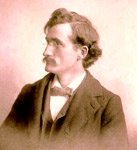
Energetic, insightful and innovative, Bailey, was not only a botany and agriculture scholar at Michigan State and Cornell, but also a practical educator. He helped to found the cooperative extension services and 4-H program and wrote manuals for farmers and gardeners as well as scientific works, in fact he wrote or co-wrote more than 65 books, 1300 articles, and founded and edited journals, He edited the monumental The Cyclopedia of American Agriculture (1907-09), and Cyclopedia of American Horticulture (1900-02) which I still use today as an important resource. Schools, awards, buildings and streets and a museum are named in his honor.
Rev. John Banister (1650-1692)
Church of England minister to Virginia colonists from 1678 – 1692. Within a year he collected the plants for and prepared a plant catalog of 151 plants, “Catalogus stirpium rariorum.” (1679) He taught himself to draw to accurately portray plants. Over time he sent seeds, plant specimens, descriptions, drawings, insects, snails, shells and mussels to his English botanical friends. He discovered about 340 new plants including the iconic Purple coneflower, Echinacea purpurea; Red bud tree, Cercis canadensis; Shooting star, Dodecatheon meadia; and Magnolia virginiana. He died a martyr to nature, shot by accident as he bent over to pick a plant from the ground.
Sir Joseph Banks (1743-1820)
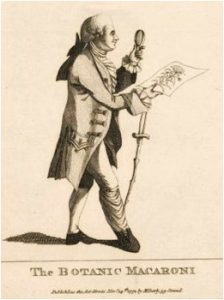 English explorer, naturalist, major supporter, promoter and financial backer of botany. After exploring Newfoundland and Labrador for its flora and fauna he joined Captain Cook on the Endeavor for three years to South America, around the Cape to Australia, New Zealand and Tahiti where he and Swedish botanist Daniel Solander collected about 800 new plants. He lured Solander, a protégé of Linnaeus, away from Sweden when he hired him.
English explorer, naturalist, major supporter, promoter and financial backer of botany. After exploring Newfoundland and Labrador for its flora and fauna he joined Captain Cook on the Endeavor for three years to South America, around the Cape to Australia, New Zealand and Tahiti where he and Swedish botanist Daniel Solander collected about 800 new plants. He lured Solander, a protégé of Linnaeus, away from Sweden when he hired him.
Members of the prestigious Royal Horticultural Society elected Banks president and he served for more than 40 years advocating for voyages of discovery, giving advice to King George III, befriending scientists and encouraging explorers. He collected a huge quantity of herbarium specimens where botanists gathered to study. He pushed to expand Kew Botanical Gardens where many of the discoveries went. One such plant hunter was Archibald Menzies who, without Banks’ intervention may not have joined the Vancouver Expedition collecting plants on the Pacific Northwest, Alaska and California.
Others include Francis Masson went to South Africa, John Ledyard who went to Kamchatka, William Hooker who went to Iceland and Charles Abel who went to China. Islands, peninsula and suburbs are named in his honor. Linnaeus named the showy tropical Protea the genus Banksia for him. About 80 other plants bear his name including a banana, Musa banksii.
John Bartram (1699-1777)
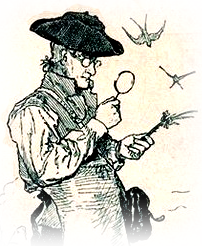 Inquisitive, hardworking Quaker farmer, John Bartram became a plant hunter at the instigation of English gardener Peter Collinson to send plants and seed. He trekked throughout Pennsylvania, to upstate New York, New Jersey, Rhode Island, and Virginia, the frontier of the Ohio Country, West Virginia, the Carolinas three times, Georgia and Florida. Bartram travelled many thousands of miles searching for plants by foot, primarily by horseback and occasionally by boat – canoe and battoe.
Inquisitive, hardworking Quaker farmer, John Bartram became a plant hunter at the instigation of English gardener Peter Collinson to send plants and seed. He trekked throughout Pennsylvania, to upstate New York, New Jersey, Rhode Island, and Virginia, the frontier of the Ohio Country, West Virginia, the Carolinas three times, Georgia and Florida. Bartram travelled many thousands of miles searching for plants by foot, primarily by horseback and occasionally by boat – canoe and battoe.
He was the 1st plant hunter to travel widely in North America. King George III appointed him as royal botanist for North America. Linnaeus considered him the “greatest natural botanist.” River birch, Betula nigra; Red buckeye, Aesculus pavia; False indigo, Baptisia australis and Frankliana altamaha are among his finds. Although he found and introduced possibly 300 new plants to gardens and landscapes only one bears his name – a moss from Massachusetts named Bartramia. Unfortunately it is a plant Bartram never collected, that grows in a place he never explored and was named by a person he never knew!
His house and botanic garden are preserved as a museum. He helped found the American Philosophical Society which still exists today.
Joseph Breck (1794-1873)
Plant entrepreneur. Breck founded Joseph Breck and Co. in 1818 and it exists today as Breck’s. Editor of New England Farmer and Horticultural Register. Author of The Flower Garden; or, Breck’s Book of Flowers, 1851. It is a good source of information about heritage plants. This book is about the cultivation of ornamental plants such as perennials, annuals, shrubs and evergreen trees. One of the founding members of the American Seed Trade Association, Breck was the president of the Massachusetts Horticultural Society from 1859 to 1862
Mark Catesby (1682 -1749)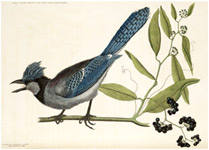
English naturalist who visited his sister in colonial Williamsburg with a side trip to the West Indies 1712-1719. He returned to Charleston Carolina and collected plants, birds and animals 1722-1726. He went home to England and spent 20 years writing, drawing and etching The Natural History of Carolina Florida and the Bahama Islands. It is one of the most remarkably beautiful books ever. You can see it here
John Clayton (1694-1773)
Emigrated from England to colonial Virginia at age 21. He was employed as County Court Clerk of Gloucester County for more than 50 years. Plants, however, were his passion. He probably accompanied Mark Catesby on a plant hunting trip and they corresponded after Catesby’s return to England. Clayton spent the rest of his life collecting and studying Virginia’s native plants.
Catesby “introduced” Clayton by letter, to Dr. John Frederick Gronovious (1690-1762) of Leiden, Netherlands. Clayton sent many plant specimens and seeds to Gronovious who shared some with his friend, then in Holland, Linnaeus, who named Spring beauties for him, Claytonia virginica. Controversy surrounds Gronovious’ authorship of Flora Virginica. Some say Gronovious simply plagiarized Clayton’s work. Whether theft or not, it is an important work about Clayton’s plants. You can find more information here
Henry Compton (1632-1713)
Bishop of Oxford and Bishop of London. Compton had two interests, his religion and plants, not necessarily in that order. He indulged his affection for plants at his summer home, Fulham Palace with acres of gardens. Successive bishops of London had continuously occupied Fulham Palace since 704. During Compton’s tenure the gardens became famous. Compton’s position gave him authority over colonial ministers in Virginia, including the authority to make appointments. He appointed John Banister to minister to Virginia colonists and, it was understood I suspect, send plants back to Fulham Palace.
Nicholas Culpeper (1616-1654)
16th century herbalist, botanist and doctor. He introduced Culpeper’s Complete Herbal: A Book of Natural Remedies of Ancient Ills with, “I consulted with my two brothers, DR. REASON and DR. EXPERIENCE, and took a voyage to visit my mother NATURE, by whose advice, together with the help of Dr. DILIGENCE, I at last obtained my desire; and, being warned by MR. HONESTY, a stranger in our days, to publish it to the world, I have done it.” Culpeper’s medical and apothecary practice and his published works strove to make health available to the general public.
Dioscordes c.30-90 A.D.
Born in Turkey, considered Greek Dioscordes was a physician in Roman Emperor Nero’s army. He collected information throughout the empire about medicinal used for plants, tested them and wrote a pharmacopeia, De Materia Medica, translated Of Medical Material. The five volume book was used at the medical reference book throughout the Middle Ages. Today it is useful for its listing of about 600 plants that we know were in cultivation 2000 years ago.
David Douglas (1799-1834)
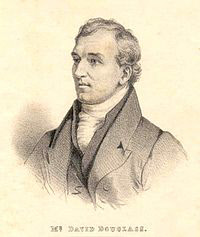 Douglas began work in his native Scotland as a garden boy at age 11. He collected plants in Scotland for botanist William Jackson Hooker who described young Douglas as having, “undaunted courage, singular abstemiousness, and energetic zeal…” On Hooker’s recommendation the Horticultural Society of London sent Douglas to North America where he collected plants for 12 years with only a few short trips back home. His 1st trip to the east coast and eastern Canada was so successful that the Society promptly sent him to the Pacific Northwest. In 1827 he walked, alone, from the Pacific across the northern Rockies to Hudson Bay for a boat back to England. He later made a second trip to the west coast. He collected in California, Oregon and Washington. His affection for conifers caused him to walk through rain forests for a month in search of a rumored big pine. He shot his gun at the cones to harvest seed, attracting unwanted attention of a group on Indians. Quick thinking he offered tobacco if they would go and find cones. Douglas gathered the cones he shot down and left before the Indians could return. Unremitting rain ruined some specimens. When he ran out of food he ate berries that he harvested as seed to send to England. He spent so much time outdoors that he lost vision in one eye. One his way back to England he collected in the Hawaiian Islands accompanied by his faithful terrier, Billy. Age 35 he fell into a pit built to capture wild bulls and was gored to death. It is estimated that Douglas found hundreds of new species and has more bearing his name than any other collector. A few include Sugar pine, Pinus lambertiana; Ponderosa pine, Pinus ponderosa; Meadowfoam, Limnanthes douglasii; and Red-flowering currant, Ribes sanguineum.
Douglas began work in his native Scotland as a garden boy at age 11. He collected plants in Scotland for botanist William Jackson Hooker who described young Douglas as having, “undaunted courage, singular abstemiousness, and energetic zeal…” On Hooker’s recommendation the Horticultural Society of London sent Douglas to North America where he collected plants for 12 years with only a few short trips back home. His 1st trip to the east coast and eastern Canada was so successful that the Society promptly sent him to the Pacific Northwest. In 1827 he walked, alone, from the Pacific across the northern Rockies to Hudson Bay for a boat back to England. He later made a second trip to the west coast. He collected in California, Oregon and Washington. His affection for conifers caused him to walk through rain forests for a month in search of a rumored big pine. He shot his gun at the cones to harvest seed, attracting unwanted attention of a group on Indians. Quick thinking he offered tobacco if they would go and find cones. Douglas gathered the cones he shot down and left before the Indians could return. Unremitting rain ruined some specimens. When he ran out of food he ate berries that he harvested as seed to send to England. He spent so much time outdoors that he lost vision in one eye. One his way back to England he collected in the Hawaiian Islands accompanied by his faithful terrier, Billy. Age 35 he fell into a pit built to capture wild bulls and was gored to death. It is estimated that Douglas found hundreds of new species and has more bearing his name than any other collector. A few include Sugar pine, Pinus lambertiana; Ponderosa pine, Pinus ponderosa; Meadowfoam, Limnanthes douglasii; and Red-flowering currant, Ribes sanguineum.
Thomas Drummond (1780-1835)
Scottish plant hunter, who, sent out by William Jackson Hooker collected in upstate NY, Canadian and US Rockies and TX. He met an untimely death in Cuba where he went to collect plants en route to Britain to bring his family back to Texas to live. (What is it with these Scots anyway? See Douglas, above.) Plants named for him: Aster drummondii, Dryas drummondii
Alice Eastwood (1859-1953)
Canadian by birth, raised mostly by nuns after her mother died and her father left her at the convent, Eastwood’s father took her to Colorado to work her way through high school. At age 14 as a live-in nursemaid for children of the Scherrer family they climbed the mountains in summers where she learned to find wildflowers. Eastwood had found her calling. She reached California when she took a job caring for an ailing woman headed for San Diego. In San Francisco she met Kate Brandegee, Curator of Botany at the California Academy of Sciences, a position Eastwood assumed within a few years. She continued to take extensive collecting trips throughout California, to Colorado and Utah and one to Alaska.
Eastwood occupied the curatorship, during which she contributed 400,000 pressed specimens she collected, for 57 years with one break. The great earthquake and fire of San Francisco hit the Academy. The earthquake did extensive damage to the building on Market Street and fire threatened the herbarium species. Eastwood arrived at work early to discover this, climbed to the top floor by the railings, the stairway in ruins, and rescued the herbarium. From 1906 until 1912 the Academy was homeless. Eastwood spent these years studying the world’s great herbaria – Washington, Harvard, New York, London, Cambridge and Paris, She retired at age 90. Throughout the years she received numerous honors – two genera are named for her, Eastwoodia and Aliciella; there’s a Lilac and an Orchid; a redwood grove, and the Academy’s herbarium. At age 91 Alice Eastwood became the honorary president of the International Botanical Congress. She flew to Sweden where she sat in Linnaeus’s chair, to accept the honor.
Dr. George Engelmann (1809-1884)
Engelmann showed an early interest in plants. At age 15 he began collecting and the topic for his dissertation for his medical degree was aberrant forms of plants. When he came to America to buy real estate for his uncle in Illinois he took notes on plants during his travels. His medical practice in St. Louis thrived but he wasted no spare minutes, using them to advance botany. He became the expert on difficult genera and plant groups such as Cactus, Yucca and Agave and authored numerous scholarly reports and journal articles about them. He collected little himself, instead sponsoring, encouraging, financing and organizing others who then sent him plants, seeds and specimens. This is what made him particularly important historically.
Without Engelmann’s efforts, for example, Ferdinand Lindheimer would not have become a plant hunter or at the very least would not have become the “Father of Texas botany.” He inspired others as well. His friend C.C. Parry named a peak in the Colorado Rockies and a canyon en route to Pike’s Peak for him. A botany chair at Washington University in St. Louis is named for Engelmann. Engelmann pine, Pinus engelmannii; Engelmann spruce, Picea engelmanii; Engelmann oak, Quercus engelmannii; Engelmann’s daisy, Engelmannia peristenia and Prickly pear cactus, Opuntia engelmannii all bear his name.
Karl Foerster (1874-1970)
After studying in Italy with German botanist and internationally regarded landscape architect Ludwig Winter, Forester returned to Bornheim Germany and started a nursery. He became an expert breeder and had an excellent eye for unusual forms of plants. During World War II under Nazi domination he risked it all by keeping Jewish friends & workers. After WW II his nursery was the only perennial supplier in East Germany. He spotted a natural cross of Calamagrostis epigeos and Calamagrostis arundinacea in the Hamburg Botanic Garden and listed it in his nursery catalog in 1939, It took nearly 70 years for Calamagrostis x acutiflora ‘‘Karl Foerster’ to become the most popular ornamental grass in gardens. He called grass “Mother Nature’s hair.” His patience as a hybridizer was well known. Forester spent nearly 20 years crossing and re-crossing delphiniums to get one immune from disease and strong enough to resist winds without staking. He created it in Delphinium ‘Foerster’s Hybrids.’
Robert Fortune (1812-1880)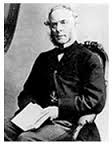
The 1st systematic plant hunter to introduce live plants from China, this Scotsman travelled for England’s Royal Horticultural Society, East India Co. and the United States on four trips to Asia between 1843 and 1859. Chinese laws restricted travel to the eastern port cities but he risked his freedom and defied the rules by travelling disguised as a Chinese merchant. His forays were extremely successful introducing many plants, Callicarpa dichtoma, Beauty berry;Pinus bungeanus, Lacebark pine; numerous tree peony cultivars, Dicentra spectabilis, Bleeding heart, Balloon Flower; and Anemone hupehensis var. japonica, Japanese anemone, to name a few. He authored six books about his travels. Many plants are named for him, including Euonymous fortunei, Hosta fortunei, Rhododendron fortunei and Rosa fortuniana.
John C. Fremont (1813-1890)
Celebrated American explorer, instigator of the “Bear Revolt” that made California independent from Mexico & in turn part of the United States, Governor of California, 1st Senator of California, owner of a California gold mine, abolitionist, 1st candidate for US president on the Republican ticket and Civil War general fired by Lincoln for freeing the slaves of Missouri. After accumulating fabulous wealth and spending it all, he died in poverty in New York. I consider Fremont the most interesting American you never heard of. Fremont California and Clematis fremontii, Fremont’s leatherflower, are named for him.
Leonhard Fuchs (1501-1566)
German physician, prolific botanical author and professor of medicine at University of Tubingen, Germany. He followed Dioscordes’ De Materia Medica and wrote his own herbal De historia stirpium commentarii insignes “Notable commentaries on the history of plants” or “New Herbal.” It describes about 500 plants including marijuana, corn and chili peppers and their medicinal uses. He founded an early Botanic garden in Germany. The plant Fuchsia is named in his honor.
John Gerard (1545-1612)
Gardener to William Cecil, who was advisor to Queen Elizabeth I, Gerard was considered one of the most knowledgeable plantsmen in England. He took an English translation (or may have translated it himself) of a Dutch herbal by Rembert Dodoens into English and added some of the recently introduced plants from North America and published it as Gerard’s Herball, or Generall Histoire of Plantes. (1597). Several years later Thomas Johnson, an English apothecary corrected it and added more about 800 additional plants. (1633) The Johnson edition is the more famous of the two although ironically it is still referred to as Gerard’s Herball. Learn more on Gerard’s Herball here
Asa Gray (1810-1888)
At age 16 he started medical school because it was inexpensive (2 semesters of lectures and 3 years apprenticeship) and would avoid the cost of college. He became interested in botany after reading an article about plants, age 17. When his medical practice did not attract many patients he decided to become a botanist. His real introduction came when John Torrey asked him to work on his herbarium classifying plants. After writing a textbook, Elements of Botany, University of Michigan was just opening and hired Gray as professor of botany and zoology but an economic downturn resulted in no work for Gray there. He continued to classify pressed specimens and write. Occasionally he took short collecting trips but none were successful.
In 1842 Harvard offered him a job teaching botany and overseeing the botanic garden. This gave him the opportunity to collect specimens from others. He avidly encouraged collectors to send him pressed specimens and seeds and he acquired specimens from other herbaria. Ultimately Gray was considered one of the most important botanists in North America. With serious determination he nearly monopolized naming new plants being discovered in the mid-1800’s. He wrote numerous books and articles. C.C. Parry named a peak in the Rocky Mountains for him.
George Jackman (1801-1869)
Where would we be without all the bodacious Clematis vines? George Jackman, the son of the Jackson Nursery founder dedicated himself to hybridizing Clematis. At the nursery in Surrey England he 1st bred the iconic royal purple Clematis jackmanii. He chose it from among 300 seedlings of the 1st attempt at hybridizing in 1858. The Royal Horticultural Society awarded this vine the Award of Garden Merit. They crossed many others after that initial success. He co-authored Clematis as a Garden Flower.
Edwin James (1797-1861)
James was the botanist and the physician on the Long Expedition, 1820, named for its commander, Major Stephen Long. The 1st expedition to travel rivers by steamboat, they discovered the difficulties of frequent stops for cutting wood for fuel and obstructed navigation. Their route included Colorado, Texas panhandle, Oklahoma and Arkansas. James was the 1st to scale Pike’s Peak and the peak was named for him originally, Pike climbed a different peak but the names became confused and the one James climbed is now named for Pike. On Pike’s Peak James discovered Aquilegia caerulea, the Colorado columbine. James wrote the official report of the journey, Account of an Expedition from Pittsburgh to the Rocky Mountains, Performed in the Years 1819, 1820. That was the last of James’ plant hunting. He later became an expert in Indian dialects, a farmer and avid abolitionist. Although he probably did it, a local jury in Iowa, where he lived, acquitted him of harboring a slave. Eriogonum jamesii is named for him.
Thomas Jefferson (1743-1826)
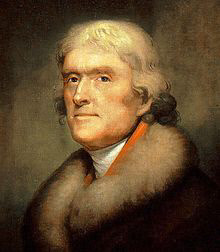
Of course you know the basics. Jefferson’s plant interest was as dazzling as his political career. He not only established important gardens at Monticello but also gardened at his family homestead and his more private estate. His wide gardening interests included agriculture, vegetables, fruits, trees and shrubs as well as flowers for ornament. “No occupation is so delightful to me as the culture of the earth,” he wrote to Peale in 1811, “and no culture comparable to that of the garden.” And it was international – he traded seeds for years with the head of the Jardin du Roi in Paris, André Thouin, but admittedly Thouin made a job of trading with everyone.
Jefferson was the moving force behind exploring west to the Pacific for many reasons, one being botanical. He discussed a trip across the continent to the Pacific with explorer John Ledyard and then reached an agreement for Michaux to go. (Michaux’s voyage to the Pacific was cut short by the French Republic for whom he worked.) Finally as president, Jefferson maneuvered a prompt agreement from Congress to support the Lewis and Clark expedition, one of its missions being to collect plants and determine their Indian uses. Twinleaf, Jeffersonia diphylla, is named for him.
Gertrude Jekyll (1843-1932)
An artist by training and a plants woman by passion, Jekyll turned her education as a painter into painting with plants, their colors, textures, heights and shapes. She designed about 400 gardens, mostly in England in the natural style of mixed perennials. She also wrote often and much – 15 books and more than 1,000 articles in magazines, many to William Robinson’s The Garden. She and Robinson agreed on garden styles and became great friends, sometimes gardening together on their knees. Her obituary in The Times 10 December 1932 trumpeted her influence, “She was a great gardener, second only, if indeed she was second, to her friend William Robinson, of Gravetye. To these two, more than to any others, are due, not only the complete transformation of English horticultural method and design, but also that wide diffusion of knowledge and taste which has made us almost a nation of gardeners.”
Pehr Kalm (1715-1779)
From Åbo Finland (then part of Sweden) Kalm began plant hunting in Sweden, Finland and Russia and went to study under Linnaeus at Upsalla. He travelled to Russia and Ukraine with Linnaeus. Upon Linnaeus’ recommendation Kalm was chosen by the Swedish Academy of Sciences to explore the NE part of America for plants that would grow in Sweden. A gardener accompanied Kalm. He travelled in Pennsylvania, New York, New Jersey and into Canada to Quebec and Montreal. He spent the 1st winter in a Swedish community in Raccoon New Jersey. Kalm had studied theology. When the pastor became ill, Kalm substituted for him. The pastor died and Kalm married his widow, taking her back to Sweden when he returned. Kalm spent a few days with John Bartram and much time with Benjamin Franklin. He spent August and September 1750 in Quebec plant hunting with Dr. Gaulthier, the Governor’s doctor. He returned to Åbo Academy to teach, where he grew a garden of his North American plants and published his journal of the trip, En Resa til Norra America. He collected 325 pressed plant specimens and 60 new species in his trip. Linnaeus named one of our most beautiful shrubs for his student, Kalmia latifolia, Mountain laurel. Kalm himself authored 3 genera, one named for his Canadian plant hunting friend, Gaultheria. Gaultheria procumbens, Wintergreen.
Engelbert Kaempfer (1651–1716)
By his late teens Kaempfer showed his interests in travel and learning. Born and raised in Lemgo of Lippe-Defmold, Germany, he attended several high schools in different cities and universities in Sweden, Prussia and Poland. He studied the natural sciences, botany and medicine. He excelled in languages learning Latin, Greek, Dutch, Swedish, Portu guese, French, English, Russian, Polish, Persian, Malayan, and Japanese. In Sweden he became the secretary to the embassy and travelled through Russia to Persia where he spent a year. He then became surgeon to the Dutch East India Company visiting Arabia, the west coast of India, Siam and finally Japan where he stayed for two years, 1690-1692.
Sixty years earlier the Shogun severed contact with all foreigners, except very limited contact with the Dutch and Chinese, due to the uprising by Christian converts in Shimabara. The Dutch were restricted to Deshima Island except for one annual trip lasting 3 months to visit the Shogun in Edo (Tokyo). Japanese provided translators to the Dutch on the Island and Kaempfer made friends with the Japanese by proving them with medical care and alcohol. They brought him plants. His book, Amoenitates Exoticae (The Wondrous World of Foreign Countries), describing the plants of Japan, was the 1st work to do so for the Western world. Kaempfer took seeds of the Ginkgo with him when he left Japan and planted them in his garden in Lemgo, where the trees still grow. These are the 1st Ginkgos growing outside of Japan and China. Some of the plants he described are named “kaempferi.” Kaempferia galanga, Aromatic ginger, is used for culinary and medicinal purposed in Asia. Larix kaempferi, Japanese larch, Kaempfer azalea, Rhododendron kaempferi and Pseudolaris kaempferi, Golden larch commemorate Engelbert Kaempfer.
Ferdinand Lindheimer (1802-1879)
His life began as the son of a prosperous merchant in Frankfurt Germany, his education that of an intellectual. It ended as a respected founding member of the New Braunfels community and editor of the Neu Braunfelser Zeitung. He 1st tried Mexico but then, angry with Santa Anna, he went to Texas to join the Army of Texas. Sandwiched in between Texas’ war for independence and writing a newspaper Lindheimer rummaged through central and south Texas from 1839 until 1851 finding and preserving plants and earning his reputation as “the father of Texas botany.” George Engelmann encouraged his decision to hunt for plants, taught him how to prepare pressed specimens and helped finance Lindheimer’s plant hunting. Lindheimer sent his plants to Engelmann and Asa Gray for determination. They parceled them out to others who bought them and sent Lindheimer the money. Lindheimer nearly died after an accident crossing the Brazos Bottom. He discovered nearly 70 new plants; some bear his name, such as, Whirling butterflies, Gaura lindheimeri; Lindheimera texana, Texas yellow star; and Nolina lindheimeriana, Bear grass.
Carl Linnaeus (1707-1778)
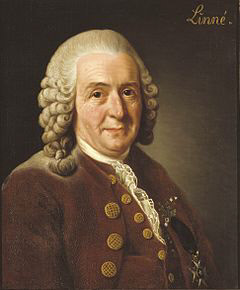 Before Linnaeus living creatures had no uniform names and names could be the length of phrases. For example the double red peony was called Paeonia faemina vulgaris flore pleno rubro. Today it is Paeonia vulgaris, thanks to Linnaeus. There had been ferment about naming systems in botanical circles see Tournefort and Ray below) but Linnaeus was the 1st to devise an orderly system based on observable traits and apply it to all known living things, an unimaginably challenging job, like counting the stars in the sky. His lasting contribution was the binomial name – two words based on a hierarchy, the 1st word called “genus” and the 2nd word “species.” I liken these to names of people. The 1st word, genus, is like your last name. It groups you with your parents, brothers and sisters, etc. The 2nd word, species, distinguishes you from your relatives. Mueller is related to the other Muellers. But Mary Mueller is unique, different from the Muellers.
Before Linnaeus living creatures had no uniform names and names could be the length of phrases. For example the double red peony was called Paeonia faemina vulgaris flore pleno rubro. Today it is Paeonia vulgaris, thanks to Linnaeus. There had been ferment about naming systems in botanical circles see Tournefort and Ray below) but Linnaeus was the 1st to devise an orderly system based on observable traits and apply it to all known living things, an unimaginably challenging job, like counting the stars in the sky. His lasting contribution was the binomial name – two words based on a hierarchy, the 1st word called “genus” and the 2nd word “species.” I liken these to names of people. The 1st word, genus, is like your last name. It groups you with your parents, brothers and sisters, etc. The 2nd word, species, distinguishes you from your relatives. Mueller is related to the other Muellers. But Mary Mueller is unique, different from the Muellers.
This system stood the test of time. However, Linnaeus used a sexual system to make these distinctions. For plants he classified them based on the number of stigmas and styles. This would be similar to saying that horses, cats, dogs, hedge hogs, giraffes, rabbits etc. are all the same genus because they all have four legs. Because of this the “natural system” displaced Linnaeus’ sexual system. Under the natural system classification is based on general characteristics of the plant. So, for example, cats would all be classified as feline and then sub categorized to lion, tiger, domestic cat, etc. Today the natural system is being replaced with DNA testing. Linnaeus is responsible, in whole or in part, for many of his former students traveling the world and collectiong plants – Pehr Kalm, Carl Peter Thunberg, Daniel Solander and many others. Uncounted honors have been heaped upon Linnaeus for his feat. I consider the highest honor to be the fact that among plant people he is recognized simply by the capital letter L.
Bernard McMahon (1775-1816)
This Irish nurseryman immigrated to Philadelphia in 1796 and opened his seed business within a few years. The store, although modest in appearance, sold seed for more than 700 species of plants. There both the knowledgeable and the amateur gather to dispense advice and hear advice. Philadelphia was the nation’s capital and Jefferson joined the customers. McMahon provided Jefferson with plants and seeds, as well as advice, for all the years to come. And Jefferson deposited some of the plants and seeds from the Lewis and Clark expedition at the McMahon nursery to grow on.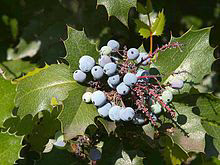
McMahon wrote The American Gardener’s Calendar, 1806. It included some an exhortation to grow native wildflowers, not only because they are beautiful but also because they are well suited for the local weather. He advocated naturalistic garden design, to imitate nature including “winding walks, all abounded with plantations of trees, shrubs and flowers in various clumps.” This perfectly describes Jefferson’s roundabout walk at Monticello. McMahon’s printed catalog provides a list of available plants at that time. Plant hunter Thomas Nuttall honored McMahon by naming a genus of shrubs for him, Mahonia.
Archibald Menzies (1754-1842)
Menzies was a physician, surgeon and plant hunter from Scotland. He sailed on 4 journeys collecting plants and ministering to the sick on board: 1st Nova Scotia, East Coast of No. America and West Indies; 2nd and 3rd trips were two extended voyages circumnavigating the globe and the 4th to the West Indies. The most famous trip is the 2nd circumnavigation of the world on H.M.S. Discovery under Captain Vancouver from 1791 to 1794. That trip took them around Cape Horn, to South America, The California coast, the Pacific Northwest, Canada, Alaska, Hawaii, Australia, and New Zealand.
He was appointed as the naturalist on the Vancouver expedition due to the intervention of Sir Joseph Banks. Banks instructed Menzies to bring back all manner of things, plants, as well as objects used by natives and keep a journal, all to be turned over to the Secretary of State for the Home Department on his return.
On this trip Menzies explored the Pacific Northwest in search of plants 13 years before the Lewis & Clark Expedition reached the same area. On their return to England Vancouver demanded that Menzies turn over his journal to Vancouver. Menzies refused and Vancouver had him arrested for insubordination. Menzies plants and seeds went to Kew Botanic Garden. He discovered the Monkey puzzle tree, Araucaria araucana; Pacific madrone, Arbutus menziesii; Cornus nutallii, Western flowering dogwood; Oregon grape, Mahonia aquifolium; Sanguisorba menziesii, Menzies burnet; California poppy, Eschscholzia californica; Pseudotsuga menziesii, Douglas fir; and the Coast redwood, Sequoia sempervirens, among many other plants.
André Michaux (1746-1802)
The French king sent Michaux, having proved his skill at plant hunting in Western Europe and the Middle East, to America to find trees to reforest their nation. In America for 11 years he traipsed into, over the East coast from Vermont south to Florida, Tennessee, Kentucky, Indiana, and Illinois – some more than once – and the Bahamas and Canada north to Hudson Bay where his guide refused to continue because of advancing winter. He established two pépinieres (plant nurseries) near Hoboken New Jersey and near Ten Mile Station South Carolina, to plant seeds and saplings to ready them for the months’ long journey to France.
While Michaux was in America the French Revolution took place and the new Republic had no money for plant explorations. Although the new U.S. government wanted to hire Michaux, the French Republic gave him conflicting assignments so he had to return to France. In Paris he authored Histoire des Chênes de l’Amerique Septentrionale, Oaks of North America, beautifully illustrated, and Flora Boreali- Americana, Flora of North America. Walter Kingsley Taylor and Elaine Norman in André Michaux in Florida give him high praise: “André Michaux was an achiever of firsts – the first trained botanical explorer to travel extensively in North America, first botanical explorer of the Allegheny Mountains (Gray 1882), first botanist to venture to the Hudson Bay area in Canada to collect specimens (Kastner 1977), farthest traveled and best trained scientist to enter the American community of naturalists at that time (Kastner 1977), first naturalist to see the North American prairie, and author of the first North American flora, Flora Boreali-Americana (Michaux 1803).”
He found more than 300 new plants, many bear his name. His discoveries include: Michaux’s lily, Lilium michauxii; Flame azalea, Rhododendron calendulaceum; Piedmont azalea, Rhododendron canescens; Shingle oak, Quercus imbricaria; Little bluestem, Andropogon scoparius; Summersweet, Clethera alnifolia; Rattlesnake master, Eryngium yuccifolium; Bigleaf magnolia, Magnolia macrophylla; and the beloved Trillium grandiflorum.
Takenoshin Nakai (1882-1952)
Japanese botanist Takenoshin Nakai (1882-1952.) Nakai, professor, author, scholar and official botanist for Korea in 1910 after Japan annexed Korea following the Sino-Japanese and Russo-Japanese wars. There he explored Korea’s botanically unknown mountains and forests and introduced its plants to the world through his international contacts and his authorship of Flora Koreana.
Thomas Nuttall (1786-1859)
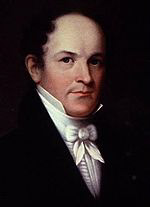 In the interest of full disclosure, Thomas Nuttall is my favorite. Hope you like him too. Nuttall is the person who not only discovered more new plants and collected over more of our country than anyone else, but also labored at the highest level of scholarship – not only in botany but also in geology, ornithology and mineralogy. Nuttall’s humble beginnings make his achievements all the more remarkable.
In the interest of full disclosure, Thomas Nuttall is my favorite. Hope you like him too. Nuttall is the person who not only discovered more new plants and collected over more of our country than anyone else, but also labored at the highest level of scholarship – not only in botany but also in geology, ornithology and mineralogy. Nuttall’s humble beginnings make his achievements all the more remarkable.
His formal schooling ended at age 14. He spent the next 7 years as a printer’s apprentice in Liverpool. Dr. Benjamin Smith Barton in Philadelphia taught the young English immigrant rudiments of botany and sent him off alone to find plants. On his 2nd trip he contracted malaria that plagued him the rest of his life and nearly killed him a couple of times. He covered every co rner of his adopted country including Hawaii, except the Southwest and Alaska. He preferred walking but sometimes rode in boats or on horses. Notions of convenience or comfort never occurred to him except once after repeated bouts of malaria disheartened him. He worked tirelessly determining what his discoveries were and writing articles and books. At the Academy of Natural Sciences where he wrote, he sometimes curled up to sleep under the Mastadon skeleton. Harvard unexpectedly appointed Nuttall as Curator of the Botanic Garden and Instructor in Natural History and Botany. He is considered Harvard’s 1st scientist. He wrote The Genera of North American Plants with a Catalogue of the Species through 1817, “a landmark in American botany,” and “beyond above praise;” a botany textbook; Manual of Ornithology, Land Birds and Water Birds, reprinted several times; and an updated North American Sylva. He found new plants numbering in the thousands. Cornus nuttallii Pacific dogwood is named for him. The Nuttall Ornithology Club, founded in 1873, is the 1st and the longest existing organization in America devoted to ornithology.
John Parkinson (1567-1650)
Parkinson began as an herbalist and ended as an herbalist. In between he became a horticulturist, and botanist, Age 14 he moved to London where he apprenticed to an apothecary. He helped found the Worshipful Society of Apothecaries and became King James I’s personal apothecary. In 1629 his Paradisi in Sole Paradisus Terrestris: Or A Garden of All Sorts of Pleasant Flowers which our English Ayre will Permitt to be Noursed Up, was published. Its importance is its topic, plants for ornament. He did list each plant’s “virtues,” meaning medicinal uses, but the primary purpose for each plant in the main body of the work was its place in a flower garden. Most prior works focused on medicinal or culinary uses. Parkinson and Tradescant the Elder were close friends and the book includes the Spiderwort which Parkinson named for his friend. “This Spider-wort is of late knowledge, and for it the Christian world is indebted unto that painfull industrious searcher, and lover of all natures varieties, John Tradescant…” He followed this book with another focusing on herbal uses for plants, Theatrum Botanicum: The Theater of Plants. Or, An Herball of a Large Extent, Containing therein a More Ample and Exact History and Declaration of the Physicall Herbs and Plants that are in Other Authours,… describing more than 3,800 plants. It became a treatise for apothecaries, who used it for the next hundred years.
C.C. Parry (1823-1890)
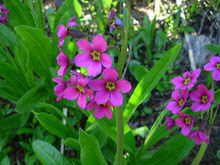 Educate d as a physician in New York Parry instead chose the wide open spaces of the west. Over a span of nearly 40 years Parry climbed, clambered up and hiked down nearly every mountain range west of the Mississippi River – the Rockies, Sangre de Cristos, Wasatch, San Bernardino Mountains, Sierra Nevadas and the Cascades collecting flowers and trees. Parry’s biographer calls him the “King of Colorado Botany.” He did not limit himself to mountains. He was one of the botanists collecting plants on the Mexican Boundary Survey between San Diego and Texas. He found new species in the Midwest, Iowa and Wisconsin; the Southwest, Arizona and New Mexico; the West, Wyoming and Utah and Mexico. His work was not limited to traipsing around the wilderness. He was the 1st botanist at the USDA. Parry discovered more than 200 new plants; about 80 are named for him. He found the iconic Colorado spruce, Picea pungens and saved the rare Torrey pine, Pinus torreyana from extinction. He collected the Agave parryi, Century plant and Parry’s primrose, Primula parryi. Surveyor General F.M. Case named a Colorado mountain on the Continental Divide after him – Parry’s Peak.
Educate d as a physician in New York Parry instead chose the wide open spaces of the west. Over a span of nearly 40 years Parry climbed, clambered up and hiked down nearly every mountain range west of the Mississippi River – the Rockies, Sangre de Cristos, Wasatch, San Bernardino Mountains, Sierra Nevadas and the Cascades collecting flowers and trees. Parry’s biographer calls him the “King of Colorado Botany.” He did not limit himself to mountains. He was one of the botanists collecting plants on the Mexican Boundary Survey between San Diego and Texas. He found new species in the Midwest, Iowa and Wisconsin; the Southwest, Arizona and New Mexico; the West, Wyoming and Utah and Mexico. His work was not limited to traipsing around the wilderness. He was the 1st botanist at the USDA. Parry discovered more than 200 new plants; about 80 are named for him. He found the iconic Colorado spruce, Picea pungens and saved the rare Torrey pine, Pinus torreyana from extinction. He collected the Agave parryi, Century plant and Parry’s primrose, Primula parryi. Surveyor General F.M. Case named a Colorado mountain on the Continental Divide after him – Parry’s Peak.
John Ray (1628-1705)
Father of natural history, Ray was an expert in plants, birds, fish, fossils, animals, rocks and languages. He is important in the history of taxonomy because he defined the meaning of species, the forerunner of Linnaeus’ system of Latin binomials and created a system of classification based on a plant’s form and structure, the forerunner of de Jussieu’s natural system. Author of numerous books including Historia Plantarum, a 3 volume work in which many of Banister’s plants are included.
William Robinson (1838-1935)
Robinson grew up poor in Ireland. By 1884 he made enough money writing about plants and gardens and editing journals about gardens and plants that he was able to buy 14 bedroom Gravetye Manor and 200 acres in Sussex. Nearly single-handed he fought against the garden style of the day – carpet bedding of garish colored annuals in precise geometric patterns like soldiers in a row and immaculately clipped hedges or trees. He advocated naturalistic plantings of perennials in drifts. Relentlessly everyt hing he wrote railed against carpet bedding. He bombarded readers with the “evils of bedding and carpet gardening.” In its place he urged the beauty of nature with mixed herbaceous borders – perennials, bulbs, shrubs, vines and trees. From 1875 Gertrude Jekyll joined Robinson in the war. Over time more acolytes joined his inspiration. Today Robinson’s garden style is nearly universal. His magazine The Garden: an illustrated weekly journal of gardening in all its branches can be accessed at Google Books. The English Flower Garden, the most popular of his 19 books, went through 15 editions during Robinson’s lifetime and was republished again in 1984. Gravetye Manor is now a small hotel surrounded by gardens in Robinson’s style.
Philipp Franz von Siebold (1796-1866)
Ger man physician and botanist who practiced medicine for the Dutch on Deshima Island off the coast of Nagasaki, Japan from 1823 to 1830. Japanese were so impressed with his medical abilities, particularly successful cataract surgery, that he started a medical school. Japan prohibited intermarriage so he and his partner lived together. They had a daughter who became the first female physician in Japan. Limited in his ability to travel on the mainland, his students, collectors he hired, friends and collaborators bought him plants, seeds and pressed specimens which he grew on until they were shipped to Europe.
He introduced more than 2000 Japanese plants to European cultivation including the tea plant, Azalea, and Hosta. Japan expelled him for the treasonous offense of possession of a map of Japan although he returned once thereafter. He is honored by many plants, a few being Acer sieboldianum, Hosta sieboldii, Magnolia sieboldii, Primula sieboldii and Sedum sieboldii. He wrote or co-wrote several books, one being Flora Japonica.
John Torrey (1796-1873)
His botany interest was inspired by Amos Eaton, when, but a young teenager he accompanied his father, to visit Newgate Prison where his father was fiscal agent for New York. Eaton, an inmate for a forgery conviction, was also the formost teacher of natural history. Eaton taught young John using plants to demonstrate. John grew up to become a doctor but botany was his passion. He joined other naturalist friends exploring the region and determining the names of their finds. Over time Torrey authored scholarly papers and became a professor at West Point, then Columbia and Princeton. Explorers sent him their specimens and he determined what plants they were, named the new ones and published papers – government sponsored trips, the Long Expedition, the Mexican Boundary Survey and Fremont’s expeditions, as well as individual explorers.
Asa Gray introduced himself to Torrey by leaving some of his work at his house. Torrey was impressed and they worked together, determining specimens and publishing the results. Explorers were combing many new regions resulting in many new discoveries. Plants they named bear the symbol T&G. Ambitiously they published The Flora of North America. Torrey encouraged instructed and found jobs for many plant hunters including C.C. Parry (who thought of Torrey as a father), John C. Fremont and William Emory. Parry named the Torrey pine, Pinus torreyana and a Rocky Mountain peak for Torrey. The genus of conifers Torreya is also named for him. The Torrey Botanical Society has continuously promoted plant hunting since the 1860’s and its Journal, published all this time, is the oldest botanical periodical in the U.S.
Joseph Pitton de Tournefort (1632-1723)
Tournefort’s father insisted that he become a priest. But when his father died he promptly he changed course and began traveling to collect plants. He journeyed through western Europe to England, the Netherlands, Spain and Portugal. Then he went to medical school which is what botanists did to study medicinal plant uses but continued to search the countryside for plants. Louis XIV’s doctor noticed his work and he was appointed professor of botany at the Jardin du Roi (renamed Jardin des Plantes after the Revolution.)
In 1701-2 he journeyed at the request of the king searching for medicinal plants and natural history. He went through Greece, Turkey and present day Iran nearly as far as the Black Sea bringing back 8000 specimens of more than 1300 species. One of them was the iconic orange Poppy, Papaver oriental. Tournefort authored Elements of Botany. He was the one who gave the concept of genus an important status in his system of classification. Each genus was defined in a clear way and useful to distinguish the group of plants. He also made a distinct difference between genus and species. His work was so good that Linnaeus adopted many of his genera 60 years later. You can see how much of Tournefort’s work is still valid today by viewing the drawings in his book Institutiones rei herbariae on the Biodiversity Heritage Library website. Tournefort was the 1st to distinguish lichens and was original and useful in his work on fungi. Linnaeus named a genus for him, Tournefortii.
John Tradescant the Elder (unknown – 1638) and the Younger (1608-1662)
John the Elder gardened his way to the top becoming Keeper of His Majesty’s Garden at Oatlands Palace. Plant hunting adventures in Russia, the Netherlands, and the Mediterranean preceded his appointment. He also urged the Secretary of the Admiralty to ask English seamen to bring back from their voyages plants and seeds. With his collections he started a nursery garden at South Lambeth. His son followed, working in the nursery and exploring. He travelled to the colony of Virginia 3 times in 1638, 1642 and 1654 collecting plants. When his father died he became Keeper of His Majesty’s Garden. Each man also authored a catalog of the plants growing in the nursery. The father’s catalog named 760 varieties in 1634. The son’s catalog named some 1500 plants in 1656, many plants native to Virginia. They are honored by the Spiderwort, Tradescantia virginiana. The Museum of Garden History in South Lambeth at the site of their burials celebrates their lives.
Ellen Willmott (1860-1934)
She inherited great wealth and Warley Place, an English estate in Essex with gardens dating back centuries. Consumed by gardening she also bought estates with gardens in France and Italy and employed more than 100 gardeners keeping the places weed free. Post-war both her wealth and sanity took a nose dive, although arguably anyone so addicted to gardening could easily suffer a similar fate. The story is that Miss Willmott’s ghost acquired its name because she carried the seeds of this thistle and dropped them in neighbors’ gardens as she walked. The plants emerged after words, probably not for at least a season. Additionally her personality, by reputation, was as prickly as the thistle – which, by the way, has quite prickly bracts. She authored The Genus Rosa and Warley Garden in Spring and Summer. Eryngium giganteum, Miss Wilmott’s Ghost and Potentilla nepalensis ‘Miss Willmott’, are just a few of the plants named for her.
Ernest Henry Wilson (1876-1930)
Wilson started work in an English nursery as a young teenager and through diligence earned his way to Kew Botanic Garden. An agreement between Kew and the great nursery, Veitch and Sons, sent Wilson to China in 1899 to find the near mythical Dove tree, Davidia involucrata. When he arrived at its location it had been cut down for lumber. He eventually found a grove and collected seed. He collected for the nursery for five years including his favorites Regal lily, Lilium regale and Beauty bush, Kolkwitzia amabalis, both stunning plants, nearly forgotten today.
Within a year he was back in China on the Tibetan border for Harvard’s Arnold Arboretum. Despite hazardous travel Wilson went back to collect more Regal lily bulbs to assure its introduction to gardens. On this trip an avalanche killed one of his porters and broke his leg in two places. Despite his “lily limp” he continued to travel to Asia – Korea, Japan, India, Singapore Tasmania, Australia and New Zealand as well as Africa and South America.
He introduced more than 1000 species of plants, over 60 are named for him. More than 100 of his plants have received honors from the Royal Horticultural Society. He authored more than a dozen books. A garden in his native village, Chipping Campden carries his name.
